The decision to use an NZXT S340 as the OcUK Ultima Finesse Blackhole system’s chassis is likely to be met with praise amongst buyers and observers. We video-reviewed the NZXT S340 here.
NZXT produced a charm with the S340 – it’s an affordable chassis that still offers a number of bells and whistles and sports a unique, eye-catching appearance. The large, crystal-clear (not smoked) side panel window gives excellent viewing of the internal hardware, especially when combined with the Ultima Finesse Blackhole’s pre-installed lighting strips and LED fans.
A gap behind the front bezel allows the pair of 140mm fans that OcUK installs to breathe.
Despite the shiny panels, NZXT's S340 actually shows decent fingerprint-resistance.
Possibly the best word to describe the system’s internals is ‘gorgeous’. OcUK’s ability to match colours, even down to the shade of black, is superb. And the cable management is equally strong, with black braided adapters chosen over the PSU’s potentially-ugly default connectors.
This impressive appearance stems back to the smart choice of components and chambered chassis design. But form is no good without function, hence why OcUK makes such an effort to ensure that the system’s cooling configuration is capable.
Cooling the 3.9GHz-clocked 5820K CPU is the job of a dual-tower Prolimatech Genesis Black Edition CPU cooler. Again, effort is made to maintain the black colour theme throughout and the pair of 120mm BitFenix Spectre PRO 1200RPM White LED fans streamline with the lighting configuration. The Genesis CPU cooler works well with low speed fans.
I like the choice of CPU cooler for thermal performance – two towers provide a large cooling surface area, while the downwards-facing fan will blow air over the 16GB quartet of TeamGroup Elite 2400MHz DDR4 memory modules and the X99 motherboard’s hot VRM. The biggest problem is Prolimatech’s terrible fan mounting mechanism.
There’s no worry about the CPU heatsink itself moving during shipping – the mount is as secure as a house. But the fans are sparingly ‘held’ on by clips that push against the frame. There’s no clipping through the fan holes for extra stability, so I would be surprised if they remain fully attached during shipping.
Securing the fans by a set of black zip-ties would be a sensible decision, and it would not negatively affect the system appearance.
MSI’s X99S SLI Plus motherboard recommends using the top two PCIe x16 slots for two-card configurations, resulting in back-to-back graphics cards. This is not a good decision, hence why OcUK has tested the graphics cards with a cooling gap and certified them to function without issues or performance penalties.
It is pleasing to see that OcUK applies a common sense element to the system build, rather than simply take the questionable guidance of each component vendor. The two GTX 970 graphics cards operate with a PCIe 3.0 x8/x8 link from the CPU, and are permitted a two-slot cooling gap between them. A third graphics card would also run at PCIe 3.0 x8 and would command the cooling gap as its home.
We reviewed the factory-overclocked KFA2 GTX 970 Infinity Black Edition graphics cards here, and found them to be excellent all-round performers. Taking performance out of the equations, the cards look fantastic, with their black coolers and annotated backplates.
The eagle-eyed amongst you will notice the bottom graphics card sagging into contact with the 250GB Samsung 840 EVO SSD. Our sample simply shipped with the SSD mounted in an unintentional location; OcUK informed us that the system is intended to be built with the SSD in the left 2.5” slot or one of the HDD bays, removing it from interference headaches.
Two 140mm Akasa Apache fans bring air through the front of the case and blow it directly over the graphics cards. The 4-pin PWM fans are capable of operating at speeds between 600 and 1300 RPM. A white LED lighting strip is stuck next to the fans.
OcUK retains the two 120mm exhaust fans that are supplied by default with the S340 chassis. These are connected directly to a power source, rather than being managed by the motherboard.
The system’s overall cooling configuration is superb. The two larger fans being used as intake also promotes positive pressure, potentially reducing internal dust build-up. That said, acoustics may not be the best with a total of 11 fans spread throughout the system.
The chambered design of NZXT’s chassis reduces the complexity of cable management. Nevertheless, OcUK does a good job at neatly routing the cables and maintaining order behind the motherboard tray.
None of the rear cables are visible from the component side of the chassis.
A 2TB Seagate ST2000DX001 SSHD is installed in the relevant bay. Accessing this drive, or installing another, will be a little tricky due to the bundle of cables. That is an infrequent task, though.
Power is supplied by an 80+ Gold-rated 750W SuperFlower Leadex unit. The unit is fully modular and cools itself with a 140mm fan.
750W is a smart capacity for two GTX 970 graphics cards and a LGA2011-3 5820K CPU. The additional headroom permits for CPU overclocking while staying within the PSU’s rated output specification.
MSI’s motherboard provides eight rear-mounted USB 3.0 ports via a mixture of ASMedia, VIA, and X99 controllers.
Each of the graphics cards provides a pair of DVI connectors, a DisplayPort link, and HDMI 2.0. This configuration is suitable for driving a number of high-resolution monitors.
The lighting configuration created by OcUK is very impressive. The pure white colour is very difficult to capture in a photograph (it looks blue rather than pure white), but it is certainly eye-catching when in the same room as the system.
Surrounding hardware is illuminated by the lighting system, although not by an eye-straining amount.
 KitGuru KitGuru.net – Tech News | Hardware News | Hardware Reviews | IOS | Mobile | Gaming | Graphics Cards
KitGuru KitGuru.net – Tech News | Hardware News | Hardware Reviews | IOS | Mobile | Gaming | Graphics Cards


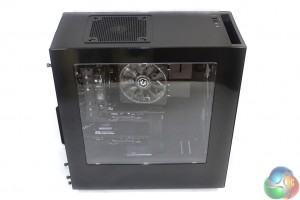
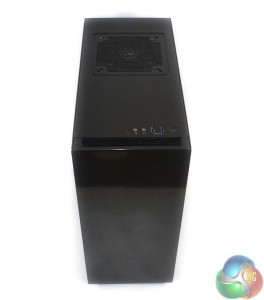
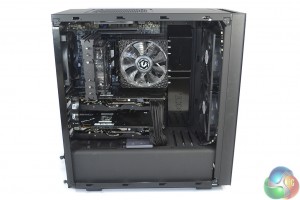
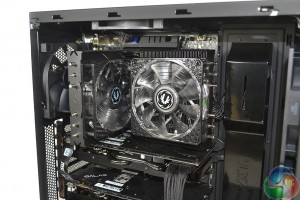
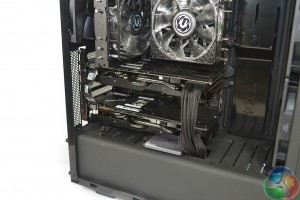
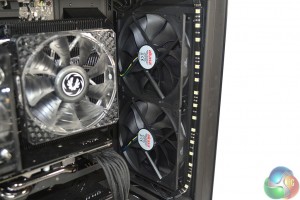
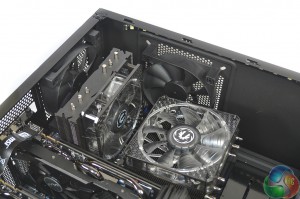
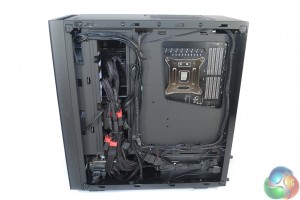
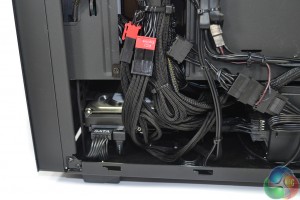
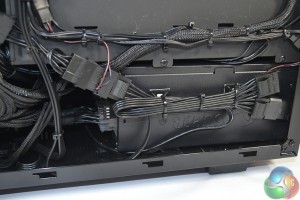
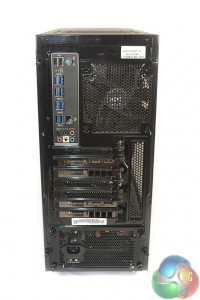
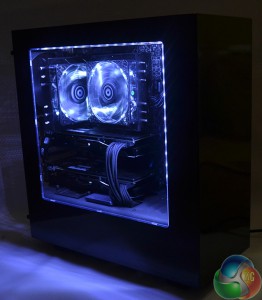
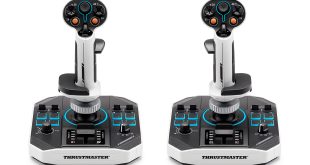
Gotta love those BitFenix fans!